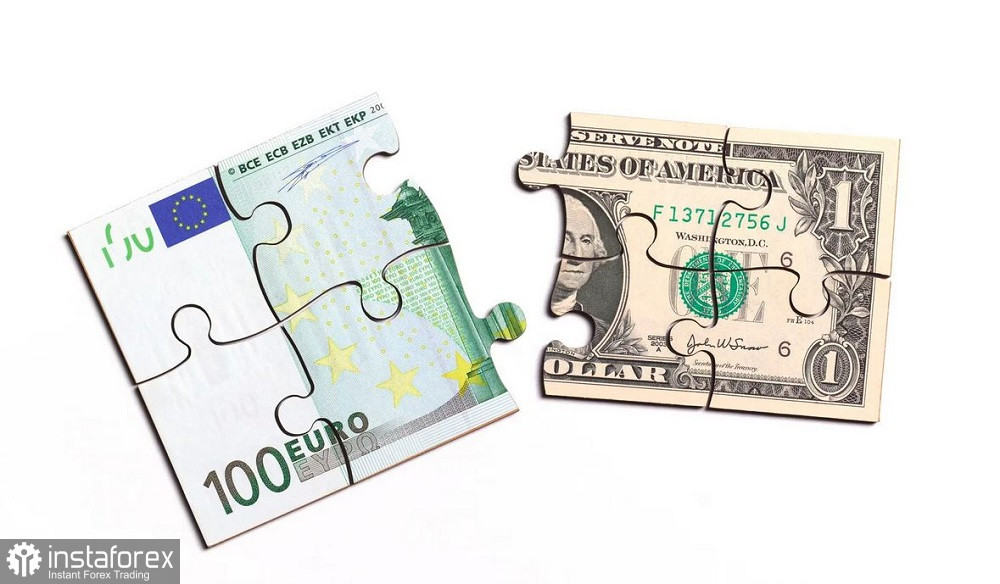The EUR/USD pair ended the trading week at 1.0870, that is, actually at the opening level (last Monday trading started at 1.0869). This shows that traders are being indecisive – both bulls and bears.
The dollar is back, but without a furor
Key macro data failed to tip the scales in either direction. In the first half of the week, the pair's bulls took the initiative and made a new 9-month high at 1.0930. Then the bears traded and pulled the pair down to 1.0840. But as a result, the pair stayed in the 1.0850-1.0950 range, within which it traded for the second straight week. The situation was complicated by the so-called "FOMC Blackout Period" (a 10-day period, this is the time when Fed staff generally do not speak publicly between a week prior to the Saturday preceding a FOMC meeting and the Thursday following that meeting). The European Central Bank's comments only had a limited impact on the pair: there is no intrigue regarding the February ECB meeting, which cannot be said about the forthcoming Fed meeting.

Perhaps the main result of last week is a kind of a "breather" for the greenback. The US dollar index rebounded from the week's lows and on Thursday-Friday it partially regained the lost positions. This was primarily due to the release of the US GDP report. Real GDP increased at an annual rate of 2.9% in the fourth quarter of 2022, while most experts expected a more modest growth of 2.6%. It is notable that everyone found "something for themselves" in this report - bears and bulls of EUR/USD.
US GDP
On the one hand, the report came out in the green zone, showing that the US economy was doing better than analysts had expected. On the other hand, the third quarter saw more significant growth (3.2%). Consumer spending increased by 2.1%, down 0.2% from the previous quarter. On the other hand, this component of the report (which accounts for almost 70% of GDP) stayed above the 2% mark for the second straight quarter. The GDP deflator was in the green zone, hitting the 3.5% mark. Indicators that reflect the inflation rate declined significantly. In particular, the price index for personal consumer expenditures (PCE) increased 3.2% (in the third quarter, an increase of 4.8% was recorded). Excluding food and energy prices, the index increased by 3.9% (4.7% in the previous quarter).
In other words, the key report of the previous week did not become an "ironclad argument" for either bears and bulls of EUR/USD.
CME FedWatch tool signals
The readings of the CME FedWatch Tool were a vivid illustration of the current situation. So, according to the results of the five trading days, the CME FedWatch tool showed a 98% probability of a rate hike of 25 basis points in February. You could say it's a done deal (in the eyes of most traders). But it's much more interesting to look at the projections for the March meeting. The probability of another 25-point hike is estimated at 84.2%. That said, the probability of keeping the rate at the February level is not at all zero at 15.5%. All this suggests that traders do not completely rule out dovish options. The inflation components of the US GDP growth report suggest that the Fed may resort to such a scenario in early spring. By the way, other inflation indicators are also not playing on the greenback's side. For example, the core PCE index released Friday fell to an annualized 4.4%. This is the third consecutive month of downtrend. Add to that the Consumer Price Index and the Producer Price Index, which have also been in consistent decline, and you get a very clear picture.
As for the rest of the macroeconomic indicators published in the US this month, the situation here is contradictory. For example, US durable goods orders jumped more than 5.6% in December 2022. However, the structure of this report suggests that the December increase in the overall figure was due to a sharp jump in orders for Boeing aircraft. While without the transport component, the volume of orders decreased by 0.1%.
Conclusions
Traders are anticipating the high-profile events of the coming week - the Fed and ECB will hold their first meetings of 2023 in early February. Formal results of these meetings are predictable (Fed is likely to raise rate by 25 points, the ECB by 50). But as far as the future prospects are concerned, there is still intrigue. January macro data failed to resolve this intrigue, so market participants prefer to take a wait-and-see approach for the time being. We can assume that the pair will continue to trade flat until the Fed meeting (February 1), within the range of 1.0850-1.0950.





















